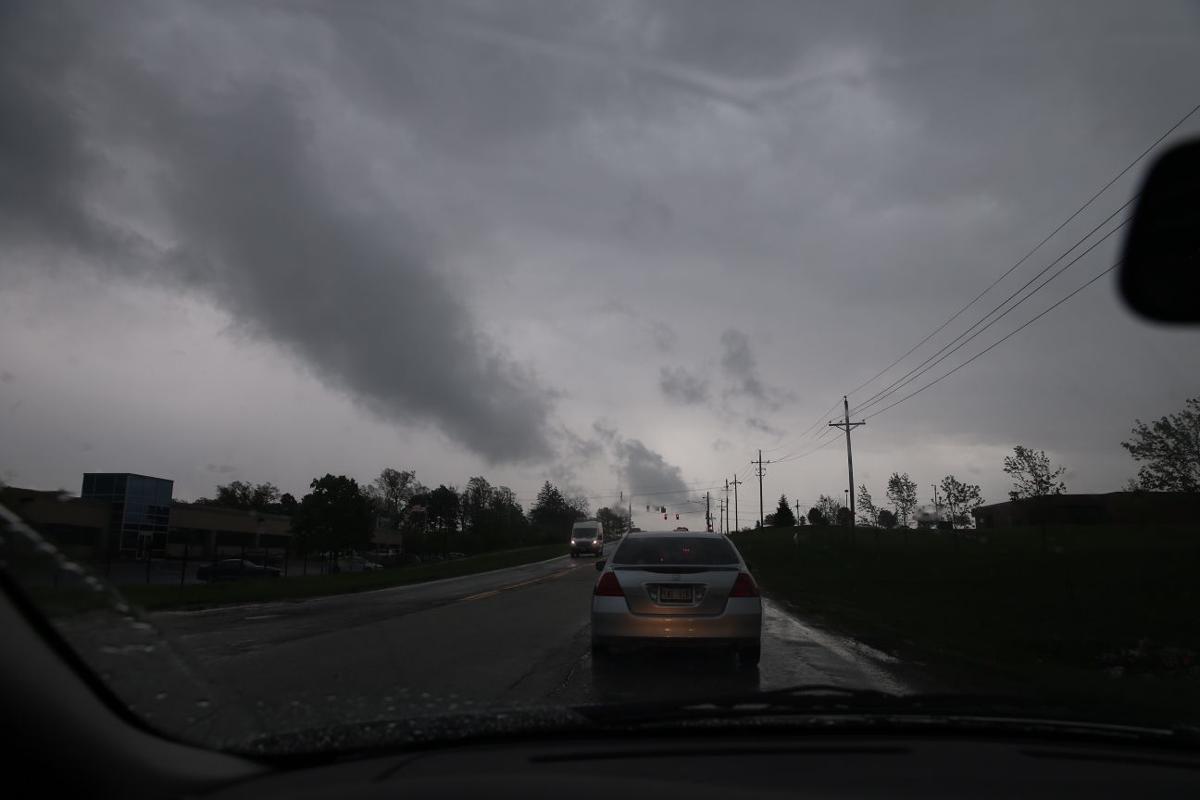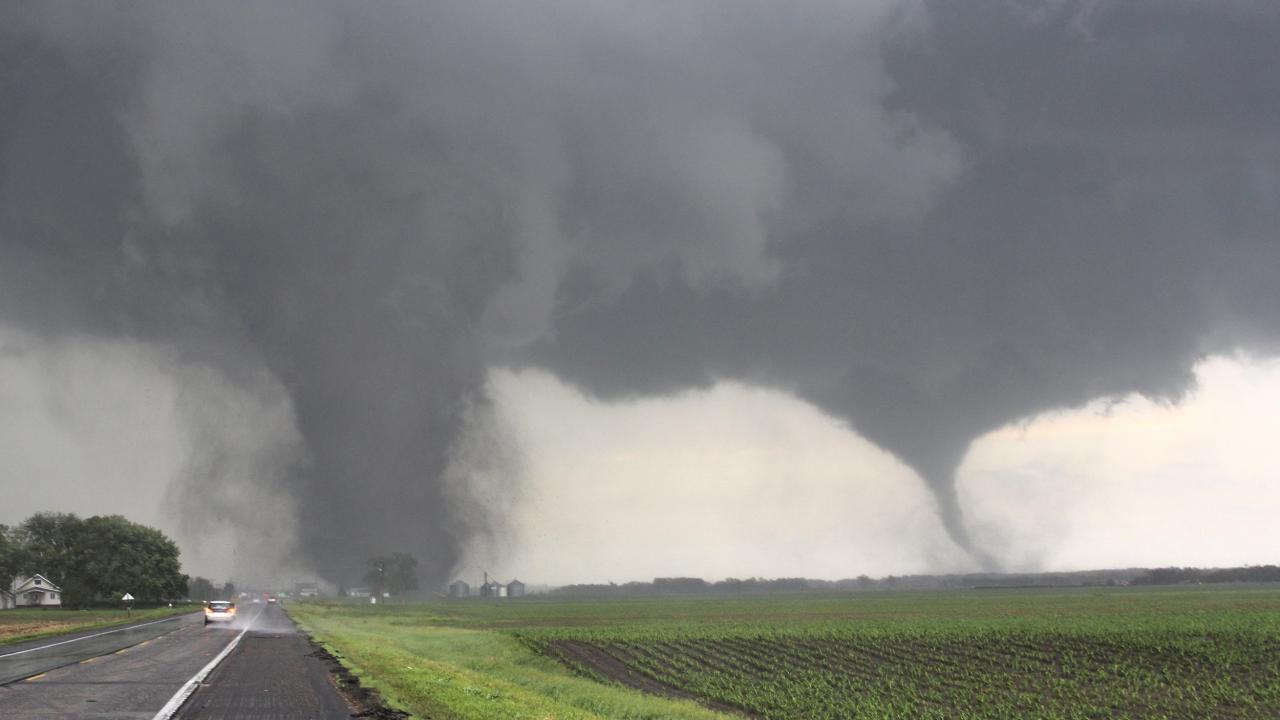
Tornado in Omaha Today: As the threat of tornadoes looms over the city, we delve into the science, safety, and history of these powerful storms to provide a comprehensive guide for Omaha residents.
From understanding the different types of tornadoes and their characteristics to staying safe during a tornado warning, this article equips readers with essential knowledge to navigate the complexities of these weather events.
Tornado Safety and Preparedness
Tornadoes are violent, rotating columns of air that can cause widespread damage and loss of life. They can occur anywhere, but are most common in the Great Plains of the United States. In order to stay safe during a tornado, it is important to be aware of the different types of tornadoes and their characteristics, as well as the steps you can take to protect yourself and your family.
There are three main types of tornadoes: weak, strong, and violent. Weak tornadoes have wind speeds of up to 110 miles per hour and can cause damage to trees and structures. Strong tornadoes have wind speeds of up to 158 miles per hour and can cause significant damage to buildings and infrastructure.
Violent tornadoes have wind speeds of over 158 miles per hour and can cause catastrophic damage, including the complete destruction of buildings.
If you are caught in a tornado, the most important thing to do is to find shelter immediately. The best place to take shelter is in a basement or underground storm shelter. If you do not have access to a basement, go to the lowest level of your home and find a small, interior room without windows, such as a closet or bathroom.
Stay away from windows and exterior walls, and cover your body with blankets or pillows to protect yourself from flying debris.
In addition to taking shelter, there are a number of other things you can do to stay safe during a tornado. These include:
- Listen to weather forecasts and warnings.
- Have a tornado emergency plan in place.
- Keep a tornado emergency kit on hand.
- Stay informed about the latest tornado safety information.
Tornado History in Omaha
Omaha, Nebraska is located in the heart of Tornado Alley, and as such, the city has a long and well-documented history of tornadoes. The first recorded tornado in Omaha occurred in 1857, and since then, the city has been hit by dozens of tornadoes, including several major outbreaks.
The most notable tornado in Omaha’s history occurred on May 6, 1975. This F4 tornado killed three people and injured dozens more. The tornado caused widespread damage to the city, including the destruction of several homes and businesses.
Other significant tornadoes in Omaha’s history include:
- The April 23, 1913 tornado: This F4 tornado killed six people and injured dozens more. The tornado caused widespread damage to the city, including the destruction of several homes and businesses.
- The June 13, 1958 tornado: This F3 tornado killed two people and injured dozens more. The tornado caused widespread damage to the city, including the destruction of several homes and businesses.
- The May 5, 1964 tornado: This F3 tornado killed one person and injured dozens more. The tornado caused widespread damage to the city, including the destruction of several homes and businesses.
Tornado Forecasting and Tracking

Tornadoes are difficult to predict, but meteorologists have developed a number of tools and technologies to help them track and forecast tornadoes.
One of the most important tools for tornado forecasting is the Doppler radar. Doppler radar can detect the rotation of the air within a thunderstorm, which can indicate the presence of a tornado. Doppler radar can also be used to track the movement of tornadoes, which can help meteorologists to issue timely warnings.
In addition to Doppler radar, meteorologists also use a number of other tools to forecast and track tornadoes. These include:
- Weather balloons: Weather balloons are released into the atmosphere to collect data on wind speed and direction, temperature, and humidity. This data can be used to help meteorologists to identify areas where tornadoes are likely to form.
- Satellite imagery: Satellite imagery can be used to track the movement of thunderstorms and to identify areas where tornadoes are likely to form.
- Computer models: Computer models can be used to simulate the atmosphere and to predict where tornadoes are likely to form.
Tornado Damage and Recovery: Tornado In Omaha Today

Tornadoes can cause a wide range of damage, from minor damage to trees and structures to catastrophic damage that can destroy entire buildings. The type of damage caused by a tornado depends on the strength of the tornado and the materials that it encounters.
The most common type of damage caused by tornadoes is wind damage. Wind damage can cause trees to fall, power lines to snap, and buildings to collapse. Tornadoes can also cause significant damage to infrastructure, such as roads, bridges, and railroads.
In addition to wind damage, tornadoes can also cause water damage. Tornadoes can cause flooding by lifting water from rivers and lakes and depositing it on land. Tornadoes can also cause water damage by damaging water mains and sewer lines.
The recovery process from a tornado can be long and difficult. The first step is to assess the damage and to begin the process of cleanup. Once the cleanup is complete, the next step is to repair or replace the damaged property.
The recovery process can be made easier with the help of insurance. Insurance can help to cover the cost of repairs and replacement, and it can also provide financial assistance to those who have been displaced from their homes.
Tornado Science and Research
Tornadoes are one of the most powerful and destructive forces of nature. Scientists are constantly working to learn more about tornadoes, how they form, and how to predict them.
One of the most important areas of tornado research is the study of tornado dynamics. Tornado dynamics is the study of the forces that cause tornadoes to form and rotate. Scientists are using a variety of tools and techniques to study tornado dynamics, including Doppler radar, computer models, and field experiments.
Another important area of tornado research is the study of tornado forecasting. Scientists are working to develop better ways to predict tornadoes, so that people can have more time to take shelter and avoid injury.
Tornado research is a complex and challenging field, but it is also a vital field. By learning more about tornadoes, scientists can help to save lives and property.
Outcome Summary

In the face of tornado threats, knowledge is power. By understanding the science behind tornadoes, staying informed about warnings, and preparing emergency kits, Omaha residents can mitigate the risks and ensure their safety during these unpredictable weather events.
Popular Questions
What is the most common type of tornado in Omaha?
Weak tornadoes (EF0-EF1) are the most frequent in Omaha, accounting for over 80% of all tornadoes.
How far in advance can tornadoes be predicted?
With modern forecasting techniques, tornadoes can be predicted up to several hours in advance, providing valuable lead time for warnings and safety measures.
What should I do if I see a tornado approaching?
Seek immediate shelter in a sturdy building or underground. Stay away from windows and exterior walls.





